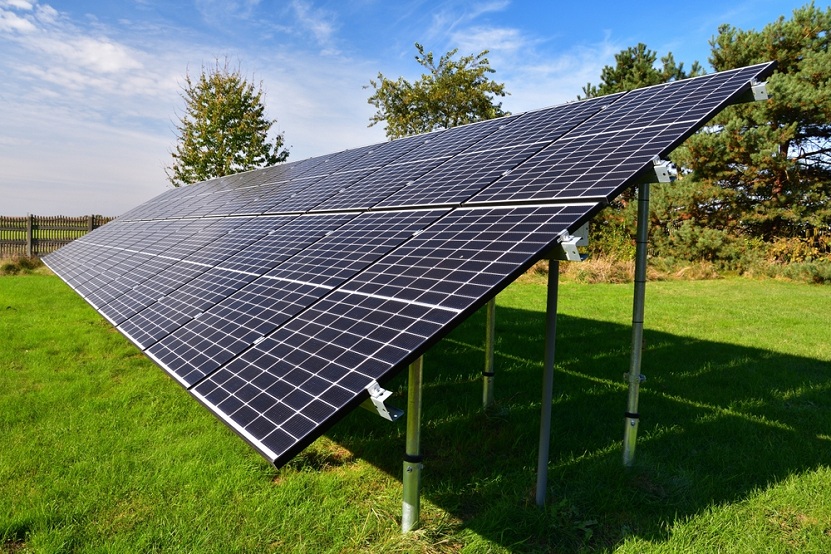You may be picturing solar panels on your rooftop when you think of installing solar panels. That's where they usually go.
Not really. There are several methods for installing solar panel systems, but rooftop installations are by far the most popular. The most common option among the many available options is a ground-mounted system.
We'll go into detail about ground-mounted solar panel systems, their advantages and disadvantages, and why you should consider installing one at your house.
Introduction to ground-mount solar power system?
Ground-mounting solar systems are simply solar panel arrays installed on the ground instead of roofs.
Depending on how the rack system is configured, you can mount these anywhere from a few inches above the floor to several feet off the floor. The panel feeds electricity into an inverter, which is usually mounted either on the back of the panel or inside the house.
Ground-mounted solar systems use 60-cell solar panels, the same size as residential roof-top solar systems. Large-scaled ground-mounted solar power plants typically use large, 72-panel solar arrays.
Ground-mounted solar panel installations are also referred to as backyard solar panel installations, free-standing solar panel installations, and ground-mount PV installations.
Various kinds of ground-mount solar panels
You can choose between using a standard ground mount, where the panel stays put, or a pole mount for mounting the panel at a higher height.
Standard or traditional ground mount
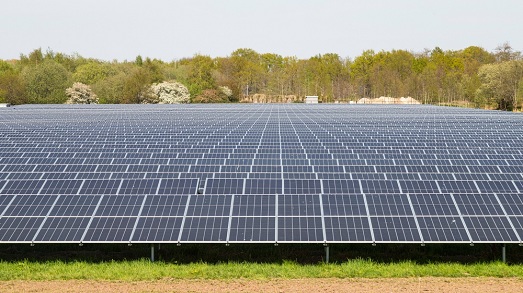
Traditional ground mount systems use ground anchor points to support the racking system that holds the solar panels on tracks.
Depending on your soil conditions, there are several methods for anchoring your structure: concrete piers, helical pile anchors, and concrete ballast anchors.
Traditional ground-mounted solar panels usually keep their position fixed, but there are now some options for manually adjusting them.
A ground mount is a simplest and least expensive way to set up solar panels. It’s also the most popular option.
Pole-mount solar systems
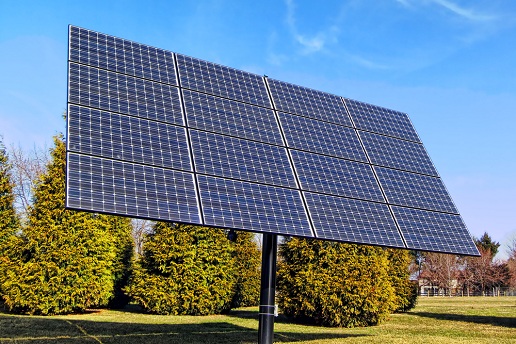
Pole-mounted solar panels can help avoid obstacles by providing extra height above them. They can also be useful for providing space and shelter for animals.
Pole mounts allow for easy integration of a single-axis or dual-axis tracker. These trackers help the panels follow the sun's path throughout the day and thus generate more power.
Conversely, pole mounts with tracking systems have a higher cost per watt, and most people find it cheaper to install a standard ground-mount array with more solar panels instead.
Ground-mounted solar panels - advantages and disadvantages
If you're considering installing a ground-mounted solar power system, here are some things to think about:
Advantages
- A good alternative to avoid roofing issues, whether they exist now or could arise later.
- It enables you to produce electricity from sunlight increases if you place your solar panels in the right direction and at the correct angles.
- It is easy to keep up with
Disadvantages
- It costs more than a rooftop solar installation.
- More difficult to install
- Occupies too much space
- It affects the overall look of your house
Ground-mounted solar power systems allow for better control over where and how to install the solar system. To get the most out of solar energy systems, they must be installed facing either south or southwest.
You can place solar panels anywhere on a flat surface. However, they cannot be positioned in the optimal spot when placed on a sloped surface.
Ground panels usually get more sun than roof panels, allowing them to produce more electricity, and saving you more energy costs.
If your roof has obstructions, for example, a skylight or chimneys, they could make installing solar panels impossible. Ground installations usually provide more space for installing solar panels than rooftop ones.
On one side, panels on the ground could be an eyesore for your home. Installing rooftop solar panels also requires significant amounts of time and expense.
However, the additional costs may be recouped over time if your roof-top system produces more energy than its equivalent rooftop panel installation.
Ground-mounted or rooftop solar panels
Ground-based solar power systems may be best for homes with a lot of electricity usage. If you have a large amount of open land on your premises, then installing more solar panels than you could fit onto your roof would be ideal.
If you install a bigger system, you'll be able to produce more electricity and better serve your energy demands.
If you have a small yard, you may not have enough space to install as many solar power systems as you want.
If you don't have enough space, installing solar panel systems on the ground will leave almost no room for your lawns, flower beds, or other landscaping. If that matters to you, rooftop solar panels might be better.
Ground-mounted solar panels for an average home
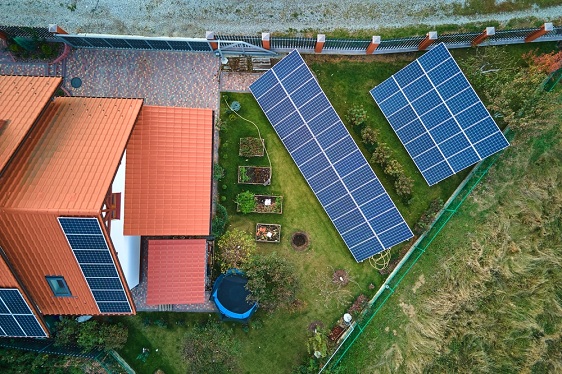
On average, a typical home needs about 20 solar ground-mounted solar panels.
Here are the rough estimates used to arrive at this figure.
Let's say you're using 300-watt panels for a house with five peak sunlight hours yearly. A single solar panel will generate enough 1.5 kWh of power for daily use.
According to the U. S. Energy Information Administration, an average household consumes approximately 900 kilowatts (kW) of electricity each year, or about 30 kW per day.
We've already established that each solar panel generates 1.5-kilowatt hours (kWh) of energy per day. So if we install 20 solar panels, we can offset the average American household's daily energy use.
If you want to know exactly how many solar panel systems you'd need to generate enough energy to meet your home's needs, ask a local installer for a free estimate or use our solar calculator below.
Leading ground-mounted solar panel companies
These are the top five companies that sell ground-mounted solar energy systems.
Steps for DIY installation of a ground-mount solar panel
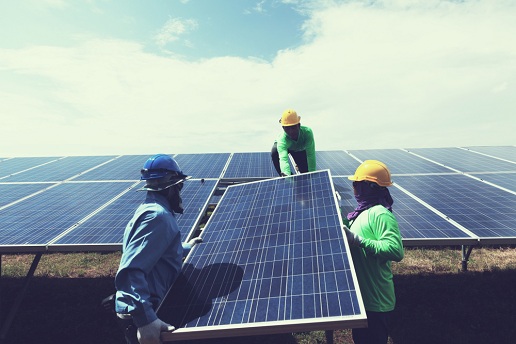
Homeowners can install their ground-mounted solar panels successfully.
Several steps are involved in the process: designing the software, obtaining approval from the city government, purchasing a solar power kit, and installing the equipment.
Many online solar kit suppliers sell ground-mounted systems or can convert standard rooftop kits into ground-mounted systems by replacing the mounting & rack components.
Ground-mounted solar arrays are generally considered more challenging to install than rooftop solar arrays because they require cement and/or excavators for anchoring.
Learn more:
Conclusion
Ground-mounted solar power systems can offer several benefits over traditional rooftop solar panels. Their ability to generate extra power makes them well worth their cost.
You may want to look into installing solar panels yourself. Talk to your local solar installer to learn how they can best assist you in meeting your home's energy needs using solar power.

